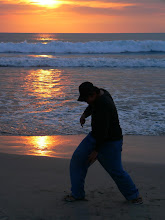 The popular astronomy application Star Walk [App Store link] $4.99 US, has been updated with some new features. You can now see meteor showers on screen, as well as connect to Wikipedia for more information on objects you have selected on the detailed star map.
The popular astronomy application Star Walk [App Store link] $4.99 US, has been updated with some new features. You can now see meteor showers on screen, as well as connect to Wikipedia for more information on objects you have selected on the detailed star map.Star Walk is probably the prettiest of the astronomy guides available for the iPhone and iPod touch. It nicely renders the dense clouds of the Milky Way, and has good visual details of the planets. It also has photos of the Messier objects, which are galaxies, star clusters and nebula.
Star Walk is location aware, so it can match what you see in the sky to what is on screen using the GPS, or you can select from 10,000 cities. You can change your location to anywhere on earth, and manipulate time to look forward and backwards. You could see what the skies were like on your birthday, or even what they looked like centuries ago or centuries ahead.
Things that could be improved would be on screen buttons that take you to the N, S, E, and W skies. The way things work now, you have to drag the map around. When you look up a Wikipedia item, it throws you out of the program. It would be better to build in a web-kit browser so you don't have to launch Star Walk again.
The app has no built in documentation. The company web site has a short PDF with more information. Although the skies in Star Walk are beautiful, most of the skies we see in real life are not. It would be nice to be able to dim the faint stars down to more accurately mimic what we see in the real world.
Nature lovers and amateur astronomers will like this program. Some of the other options at the app store include Distant Suns, [link] at $5.99 US which I have reviewed previously, and Starmap [link] $11.99 US.






No comments:
Post a Comment